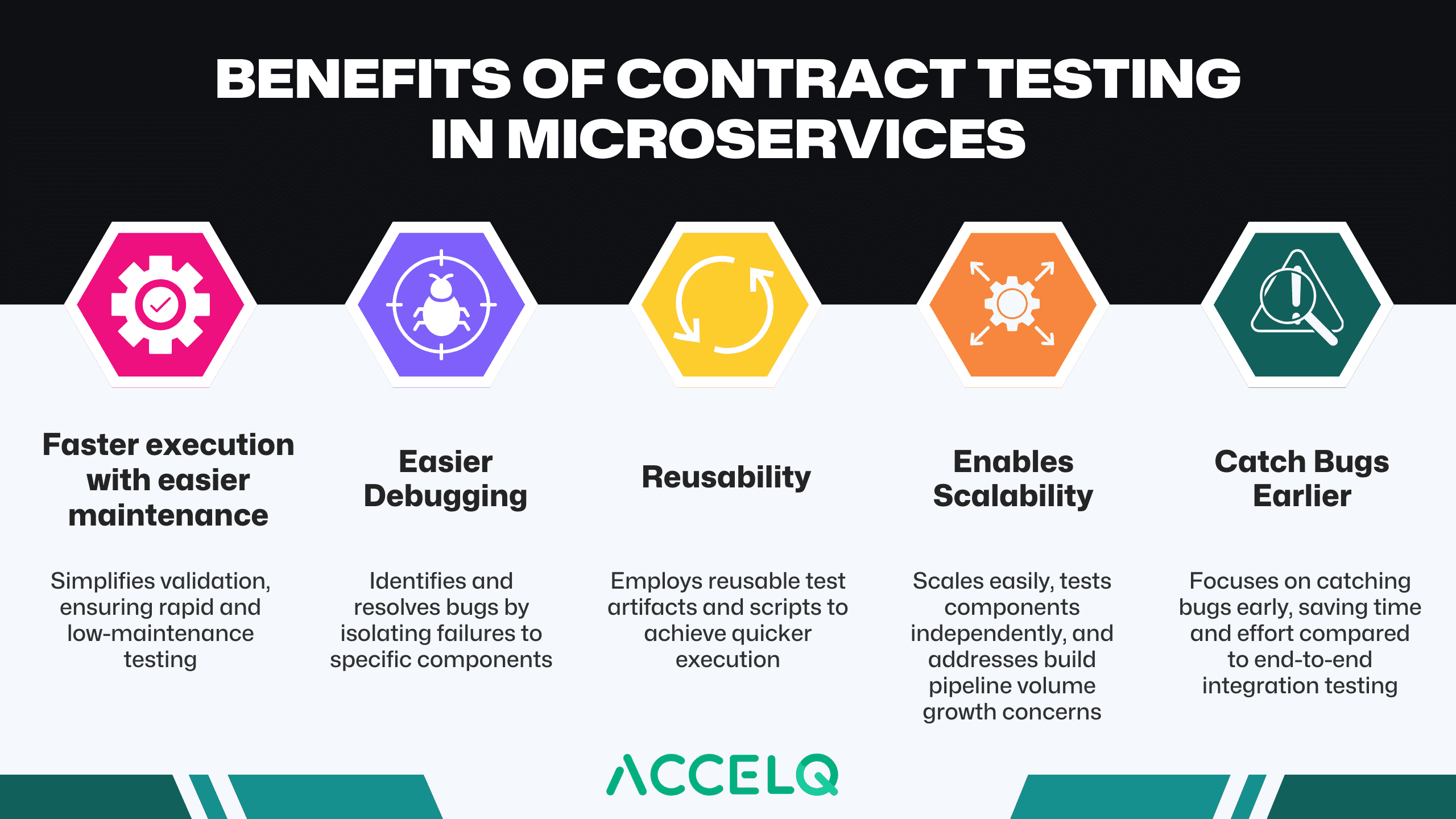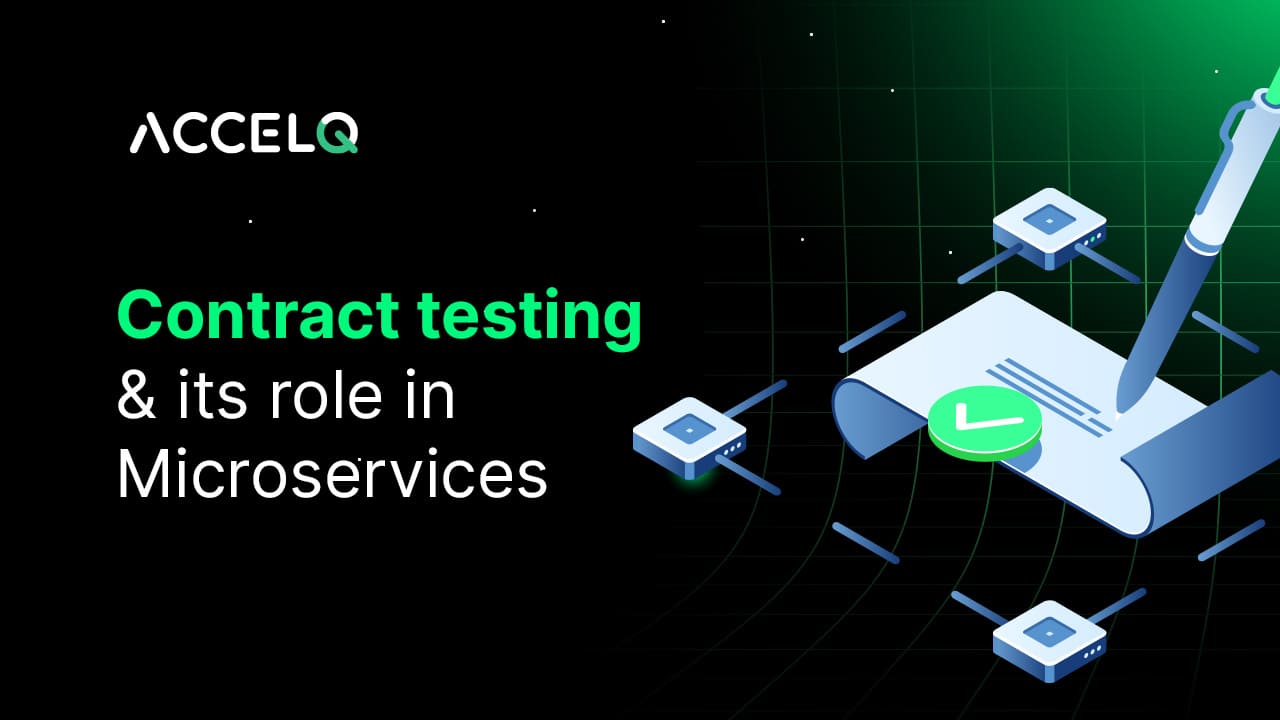Contract testing and its role in Microservices

Contract testing focuses on validating the communication between microservices by specifying inputs and outputs of a service. This includes requests and response formats, headers, status codes, and error messages. Contract testing in Microservices ensures that each service meets its contract and that they are compatible with each other. Let us understand this from the basics.
What is contract testing?
Contract testing is an approach where developers first determine how the individual services within each application system should interact with each other. The interactions between the microservices are captured and archived as a contract. This contract is then validated periodically to ensure that the terms of integration are seamlessly met or adhered to by the participating services. Over time, both the systems must agree mutually to evolve the contract and reach a consensus on the allowed interactions based on upgrades as per the application’s growth roadmap.
Integration testing tests individual units and verifies if they work as intended to when integrated. This type of testing is to ensure that communication occurs among all modules. This type of testing can be done iteratively or as a group in the microservices architecture. We shall now explore the challenges of this type of testing and how contract testing can help overcome the same.
What are the challenges of integration testing in Microservices?
Integration testing in Microservices helps in establishing a system that can flawlessly work as a single unit. It also helps validate that the remotely communicating parts work seamlessly, such as mobile applications, web applications, and microservices. End-to-end integrated tests are the most used integrated tests. Challenges of which are:
- These tests traverse through different systems; and since testers run them in a serial manner it happens to consume more time.
- There is a need for prerequisite setup like data preparation which can further slow them down.
- Integration testing can be a challenge to maintain and pose a risk of unreliability or flakiness.
- Since these tests are mostly remote and distributed, the outcome is slower, and it can clog up test automation pipelines with slow running of test suites.
- Uncovering bugs in later stages causes an increase in costs, scalability issues are also prevalent.
That is where contract testing in Microservices becomes useful.
Understanding Contract testing in microservices
Contract testing in microservices evolves from the end-to-end integration approach and leverages a contract to capture all interactions between microservices as required by the application.
The code itself generates the contract and hence it assures continuous monitoring and upgrades depending on the application’s real-time enhancements and customization requirements. Contract testing in Microservices also ensures that each microservice or system is individually tested from the other for validation of the entire interaction contract. The following are benefits of contract testing in Microservices.

Faster execution with easier maintenance
The success of any software testing also greatly depends on how fast the approach can be completed.
In today’s digital economy, enterprises need to roll out applications or custom features faster to the market owing to competition. In addition, they need to embrace techniques of automation testing to streamline the effort.
- There isn’t the involvement of multiple systems in the testing phase or the need to know the entire end-to-end integration journey.
Now these steps are usually critical to create test cases for validation as only dependent interactions are verified by contract. Combined, these two capabilities make contract testing a fast and low-maintenance testing approach.
Easier debugging
The point of failure or bug lies only in the vicinity of the component being tested with contract testing. Furthermore, it is easier to identify a specific API call or code line number because of the lower number of interfaces that the approach handles. This allows faster and easier debugging, thereby making contract testing a highly recommended model for microservices architecture-based applications.
Reusability
Test artifacts and scripts used for contract testing are repeatable or reusable. This adds to the faster execution timeline for future test scenarios. And creates more efficient and cost-effective testing strategies for upcoming applications upgrades or modifications.
Enables scalability
One of the significant advantages is that it is scalable with a low level of complexity. Since every modular component or microservice is independently tested against each other, there is no question or concern regarding the build pipelines facing exponential volume or a need to increase linearly over time. In addition, with minimal communication and effort, it is easier to scale up testing efforts considerably.
Catch bugs earlier
Since the scope of testing is lower when compared to the huge number of artifacts needed in end-to-end integration testing, the effort and time involved are significantly lower.
How does this work? Simple.
- Determine which microservices to test.
- Establish a relevant contract that defines factors governing the way the microservices should interact (request parameters, expected response body)
- Deploy an instance of the consumer microservice and a mock from the provider.
- Issue requests from the consumer to the provider microservice.
- Match the outcome against the contract requirements.
Conclusion
Contrast testing can and should be accomplished within the local test environment on a developer machine. With bugs being caught and rectified in the developer machine, the final code pushed to deployment is cleaner and more reliable. Catching bugs earlier is always a competitive advantage that contract testing brings into the picture.
With contract testing, it is easier to assure better and seamless interoperability between systems and applications. This makes contract testing a worthy choice for applications with microservices architecture, as in the case of modern SaaS product offerings.
It is, however, important to have a seamless end-to-end automated test management approach in place. This will help businesses leverage the power of test approaches like contract testing. Get in touch with us to experience ACCELQ, an innovative, codeless test automation platform that helps your business in achieving industry-leading quality goals.
Discover More
 The Ultimate 2025 Guide to Blockchain in Software Testing
The Ultimate 2025 Guide to Blockchain in Software Testing
The Ultimate 2025 Guide to Blockchain in Software Testing
 What Should You Know About Supertest?
What Should You Know About Supertest?
































